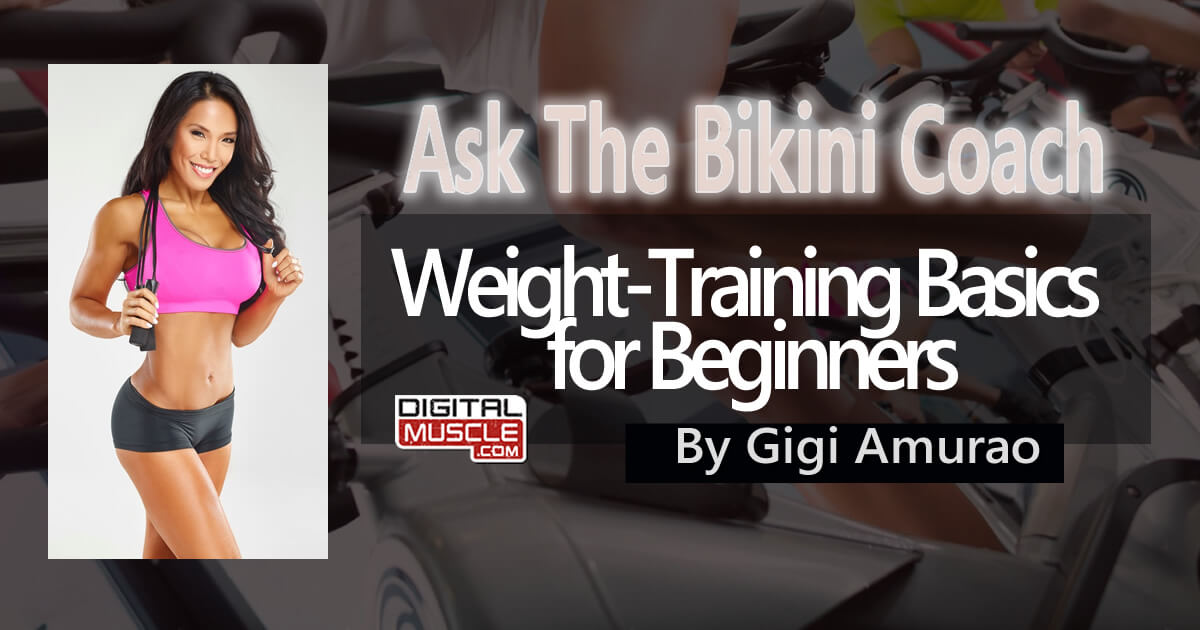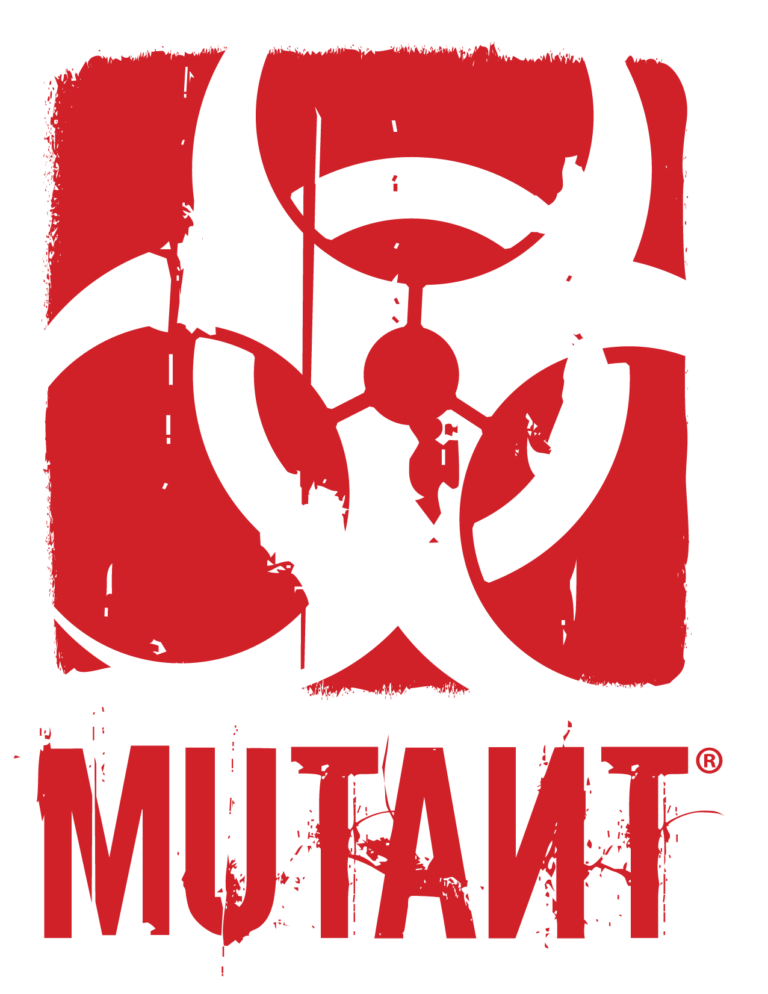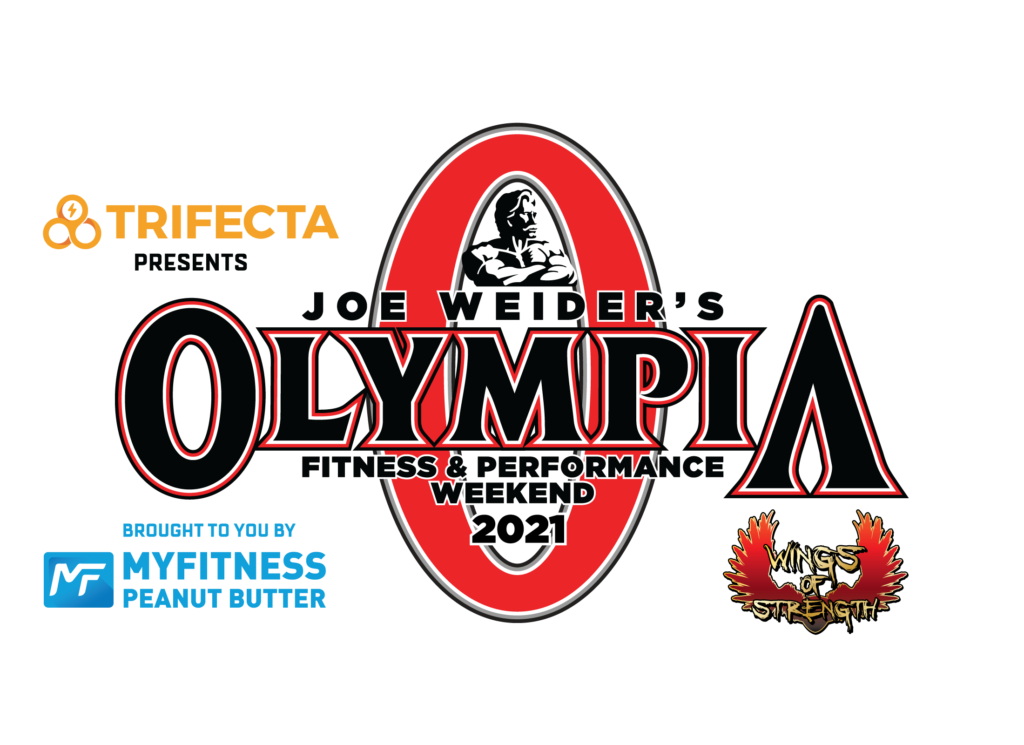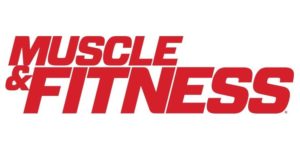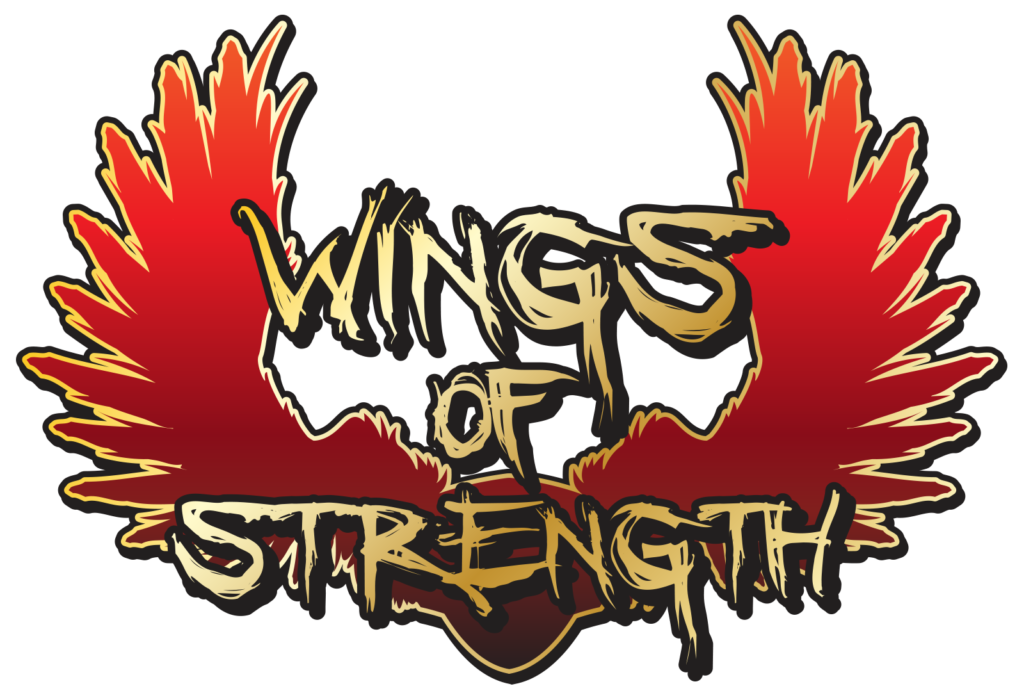 Ask the Bikini Coach
Ask the Bikini Coach
By Gigi Amurao
As a trainer, I get tons of questions, especially from the newbies I work with. Here are some of the most common queries I’m asked about weight training. If you’re just starting out on a fitness program or embarking on a new fit lifestyle, understand that success will take time, patience, and persistence.
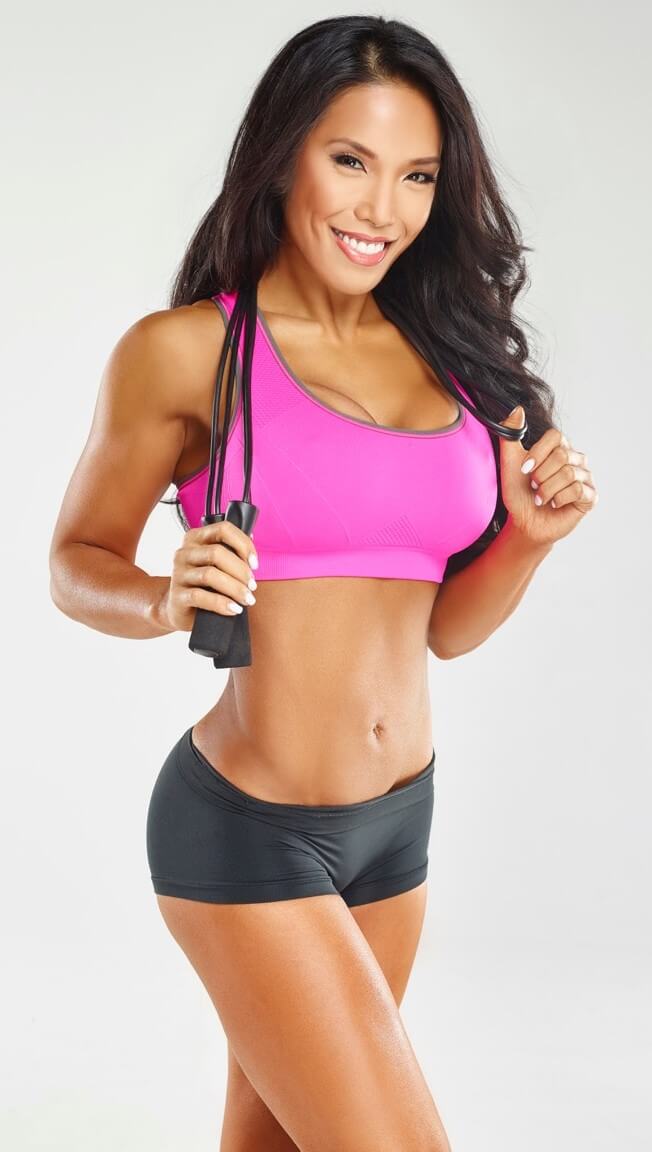 Is weight training the same as strength training?
Is weight training the same as strength training?
Weight training is a method of exercising the body in which your muscles are made to contract as a response to a stimulus brought on by resistance—external weights, body weight or various other types of resistance exercises—in order to stimulate growth and build strength. So, yes, weight training is strength training. It’s also called resistance training.
Should I try to lift weights? I don’t want to look big. What are the benefits?
Resistance training has important benefits beyond building muscle.
- It tones and shapes the body during weight loss, whether your goal is personal appearance or competition.
- It improves sport performance by increasing muscle size, strength, power and endurance.
- It prevents diseases such as diabetes, osteoporosis, and obesity.
- It builds strength and improves your balance and functionality.
- it aids in recovery from or helps manage chronic cases of heart disease, stroke, arthritis and other serious medical conditions.
- It aids in physical therapyduring recovery from an injury.
- It relieves stress, increases energy and improves your overall well-being.
How many days a week should I be working out?
There is no clear-cut answer here. It all depends on your fitness goals. In general, you should shoot for at least three days of exercise every week if you want to see results. For healthy adults, I suggest a minimum of 120 to 150 minutes of moderate-intensity cardio per week, 60 to 75 minutes of high-intensity cardio or a combination of the two. Do weight and flexibility training twice a week. Don’t start out with these numbers. Begin with less work and build your way up to them.
What are the best exercises for getting rid of fat arms, fat thighs and my belly?
Excess fat on your stomach, upper arms and inner thighs won’t respond to any one exercise. There is no exercise that will target fat cells and spot reduce in just one area of the body. You get rid of fat in those areas over time with a consistent weight training, cardio and nutritional program that trims and tones your body overall. Once you lose the weight, you can focus on muscle definition in those areas by following a strength-training program designed for that goal.

How about just doing cardio to lose weight?
While cardiovascular training is great for building a strong heart and lungs, it does little to provide your muscles with the stimulus they need to grow and become stronger. Adding a strength-training program will target the muscles that you don’t typically use during cardiovascular training.
How quickly can I see results?
It’s different for everyone, but expect to feel the results of your training before you actually see them. Many of my clients who start an exercise program and are consistent with it see an improvement in their sleep, mood and energy levels within two to three weeks. Changes in body composition often take longer to notice, however. The more consistent you are with your workouts and staying on track with your diet, the sooner your results will become more noticeable. They say it takes four weeks to see your body changing, eight weeks for your friends and family to see it, and 12 weeks for the rest of the world to notice. Just keep going and you will get there.
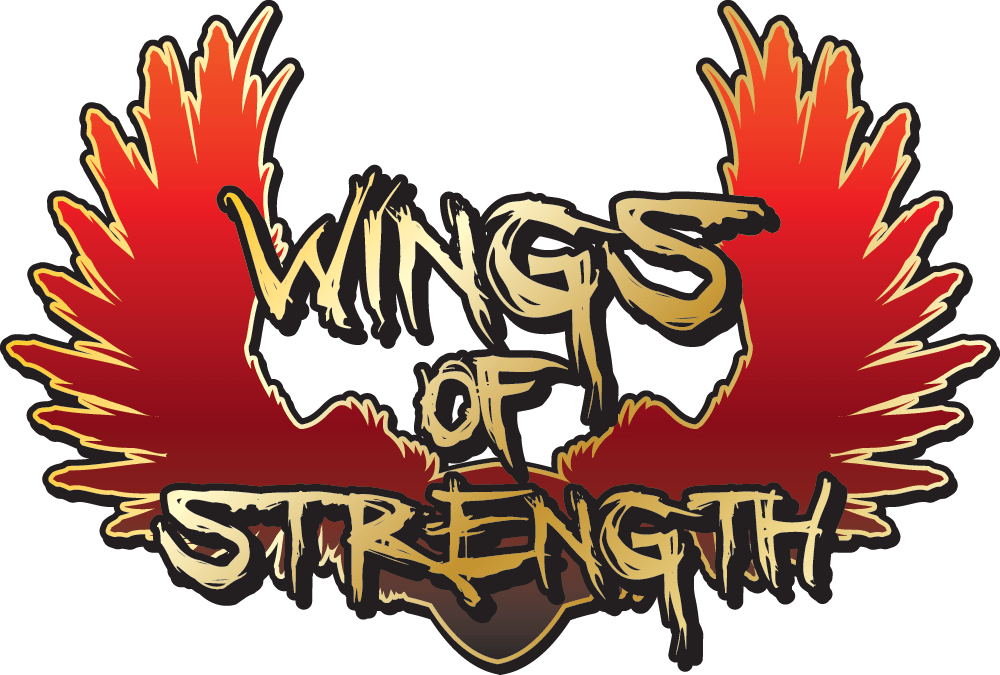 Cardio or weights, which should I do first?
Cardio or weights, which should I do first?
It depends. Doing cardio and weights in a single session can lead to faster weight loss, but for the average health enthusiast the outcome will be the same regardless which you do first. Think about where you want your energy to be used first and what your goals are. If your goal is to grow some muscle size, hit the weights first. That way you have the energy to lift heavy, and afterward you finish burning off your glycogen stores with the cardio. If you aren’t concerned with getting stronger and building muscle and just want to feel good, you can hit the treadmill first and get that rush of endorphins going before finishing off with some weight work.
I encourage my clients to do them together and make their strength workouts like cardio work, performing short bursts of HIIT—high-intensity interval training—cardio between weight-training supersets. For example, I may have them superset barbell squats and kettlebell swings, then hit the ground and do a set of mountain-climbers, and finish off with a set of standing air squats with no weight.
As an IFBB bikini pro, a certified personal trainer, nutritionist, online coach, fitness model and TV host, Gigi Amurao blasted onto the competitive bikini scene in 2012. A lifelong athlete who excelled in collegiate lacrosse and gymnastics, she earned an MBA in marketing and an advanced certificate in sports and entertainment management and enjoyed a career in network advertising before finding her passion in helping others achieve their fitness goals. As a model, she’s appeared in Muscle & Fitness Hers, Inside Fitness, and Flex Magazine. DigitalMuscle.com is proud to feature Gigi here in her own featured blog!

